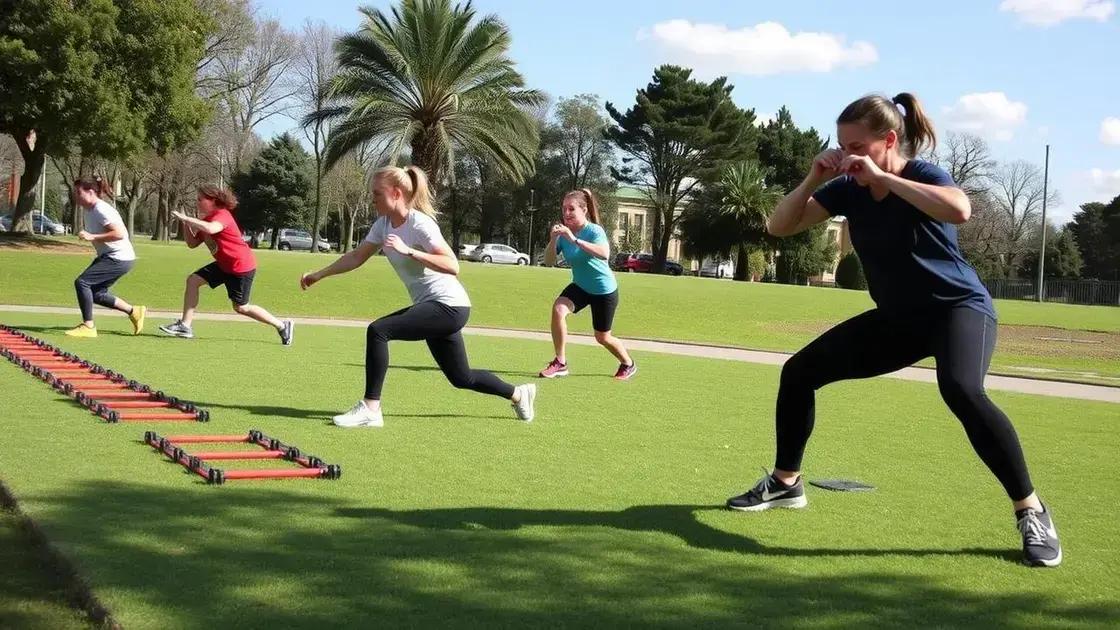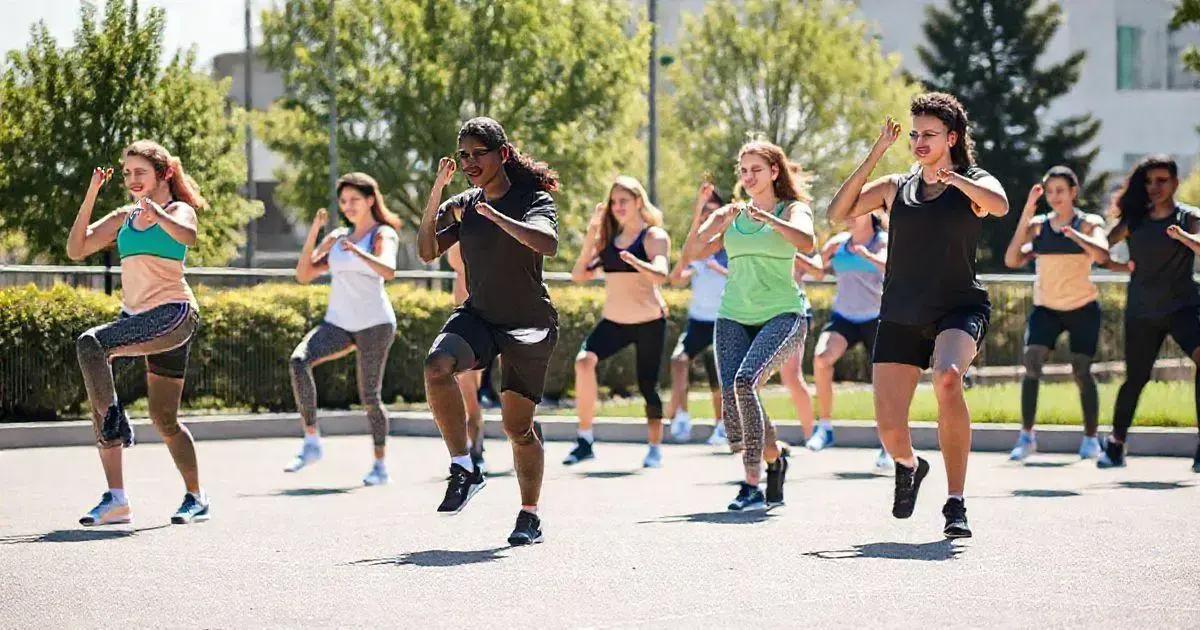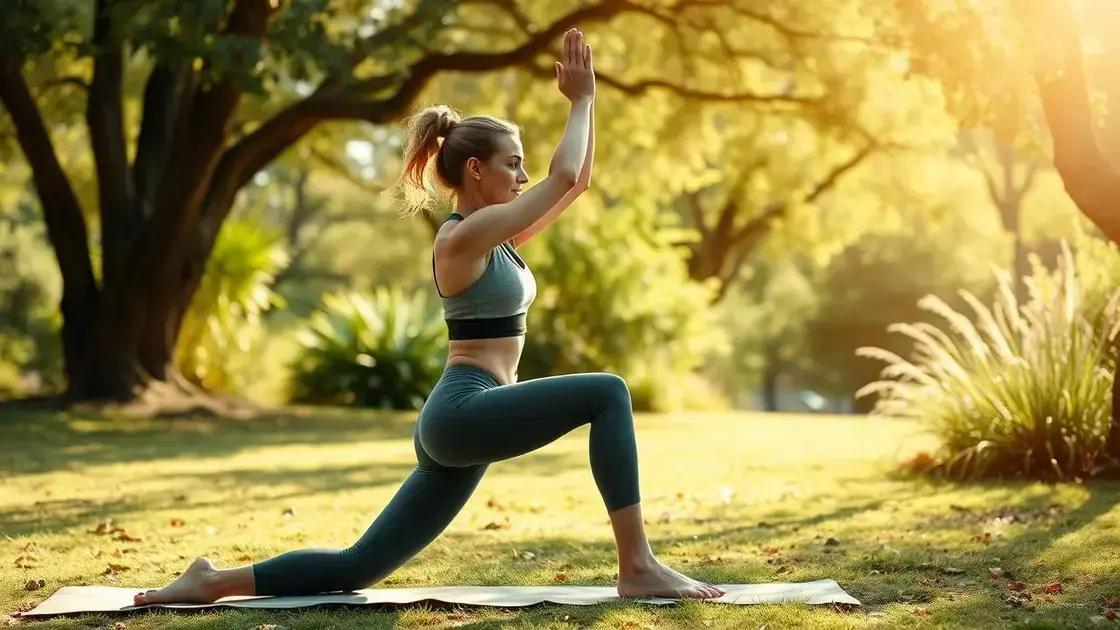The best exercises for keeping the lower body agile include squats, lunges, and leg swings, while effective warm-up exercises and stretching techniques like dynamic stretching and yoga help enhance flexibility and prevent injuries. Regular strength training, coupled with these practices, significantly improves agility for both athletes and non-athletes.
Keeping the lower body agile is crucial for overall fitness and mobility. Incorporating the best exercises consistently into your routine can improve your strength and flexibility. This article will delve into the top benefits of lower body agility, essential warm-up exercises, effective strength training workouts, and the best stretching techniques to enhance your flexibility.
Top Benefits of Lower Body Agility

Lower body agility refers to the ability to move quickly and efficiently, which is essential for overall physical fitness and daily activities. Here are some of the key benefits:
Improved Balance
Agility training enhances your ability to maintain balance during various movements. This is crucial not only in sports but also in preventing falls and injuries in daily life.
Enhanced Coordination
Practicing agility exercises sharpens your body’s coordination, which helps in performing physical tasks more effectively. Improved coordination boosts your performance in various sports and recreational activities.
Increased Strength
Lower body agility exercises like lunges and squats build strength in the legs, hips, and core. Stronger muscles contribute to better overall performance and reduce fatigue.
Better Flexibility
Agility workouts often involve movements that stretch the muscles, enhancing flexibility. Increased flexibility reduces the risk of injuries and helps maintain healthy joints.
Boosted Athletic Performance
For athletes, agility is critical in sports that require quick changes in direction. Training agility improves speed, reaction time, and overall performance, providing a competitive edge.
Enhanced Reaction Times
Improving agility can lead to quicker reaction times, which is essential in many sports and everyday activities. Being able to react quickly can be the difference between winning or losing.
Bette
Agility training often incorporates cardiovascular elements, which can improve your endurance. This means you can perform physical activities for longer intervals without tiring quickly.
In summary, focusing on lower body agility through targeted exercises can result in detrimental benefits for mobility, performance, and overall well-being. Whether you’re an athlete or just looking to stay active, enhancing your lower body agility is a smart move.
Essential Warm-Up Exercises

Before engaging in lower body workouts, it’s essential to prepare your muscles with warm-up exercises. These exercises help prevent injuries and improve performance. Here are some essential warm-up exercises:
Leg Swings
Leg swings are a simple yet effective way to loosen up your hip joints. Stand next to a wall for support. Swing one leg forward and backward, gradually increasing the range of motion. Perform 10-15 swings on each leg.
High Knees
High knees not only warm up the lower body but also elevate your heart rate. Stand tall and jog in place, bringing your knees as high as possible toward your chest. Do this for 30 seconds to a minute.
Butt Kicks
Butt kicks target your hamstrings and improve flexibility. While jogging in place, kick your heels up to your glutes. Keep your back straight and maintain a brisk pace. Continue this for 30 seconds.
Lateral Lunges
Lateral lunges are great for warming up the inner thighs and hips. Start by standing with feet hip-width apart. Step to the side into a lunge, keeping your opposite leg straight. Alternate sides for 10-12 lunges on each side.
Arm Circles
Don’t forget about your upper body! Arm circles can help loosen your shoulders. Extend your arms out to the sides and make small circles. Gradually increase the size of the circles for about 30 seconds, then reverse the direction.
Dynamic Stretching
Incorporate dynamic stretching to enhance flexibility. Perform walking toe touches by extending one leg straight and touching your toes with the opposite hand. Alternate legs for 10-15 reps.
By performing these essential warm-up exercises, you prepare your lower body for the workout ahead. This helps in maintaining agility while minimizing the risk of injury.
Effective Strength Training for Agility

Strength training plays a key role in developing lower body agility. By building muscle strength, you enhance your ability to move quickly and efficiently. Here are several effective strength training exercises to consider:
Squats
Squats are a fundamental exercise for building strength in the legs and hips. Stand with feet shoulder-width apart and lower your body as if sitting back in a chair. Keep your back straight and your knees behind your toes. Aim for 3 sets of 10-15 reps.
Deadlifts
Deadlifts target the hamstrings, glutes, and lower back, essential for agility. Stand with feet hip-width apart and hold a weight in front of you. Bend at your hips and knees, lowering the weight while keeping your back flat. Rise back up to standing. Start with 3 sets of 8-10 reps.
Lunges
Lunges improve strength and balance. Step forward with one leg and lower your hips until both knees are at about 90-degree angles. Keep your front knee above your ankle. Alternate legs for 3 sets of 10-12 reps on each side.
Box Jumps
Box jumps are an explosive movement that builds power and strength. Stand in front of a sturdy box or platform. Bend your knees and jump onto the box, landing softly with your knees slightly bent. Perform 3 sets of 8-10 jumps.
Agility training often incorporates cardiovascular elements, which can improve your endurance. This means you can perform physical activities for longer intervals without tiring quickly.
In summary, focusing on lower body agility through targeted exercises can result in detrimental benefits for mobility, performance, and overall well-being. Whether you’re an athlete or just looking to stay active, enhancing your lower body agility is a smart move.
Essential Warm-Up Exercises

Before engaging in lower body workouts, it’s essential to prepare your muscles with warm-up exercises. These exercises help prevent injuries and improve performance. Here are some essential warm-up exercises:
Leg Swings
Leg swings are a simple yet effective way to loosen up your hip joints. Stand next to a wall for support. Swing one leg forward and backward, gradually increasing the range of motion. Perform 10-15 swings on each leg.
High Knees
High knees not only warm up the lower body but also elevate your heart rate. Stand tall and jog in place, bringing your knees as high as possible toward your chest. Do this for 30 seconds to a minute.
Butt Kicks
Butt kicks target your hamstrings and improve flexibility. While jogging in place, kick your heels up to your glutes. Keep your back straight and maintain a brisk pace. Continue this for 30 seconds.
Lateral Lunges
Lateral lunges are great for warming up the inner thighs and hips. Start by standing with feet hip-width apart. Step to the side into a lunge, keeping your opposite leg straight. Alternate sides for 10-12 lunges on each side.
Arm Circles
Don’t forget about your upper body! Arm circles can help loosen your shoulders. Extend your arms out to the sides and make small circles. Gradually increase the size of the circles for about 30 seconds, then reverse the direction.
Dynamic Stretching
Incorporate dynamic stretching to enhance flexibility. Perform walking toe touches by extending one leg straight and touching your toes with the opposite hand. Alternate legs for 10-15 reps.
By performing these essential warm-up exercises, you prepare your lower body for the workout ahead. This helps in maintaining agility while minimizing the risk of injury.
Effective Strength Training for Agility

Strength training plays a key role in developing lower body agility. By building muscle strength, you enhance your ability to move quickly and efficiently. Here are several effective strength training exercises to consider:
Squats
Squats are a fundamental exercise for building strength in the legs and hips. Stand with feet shoulder-width apart and lower your body as if sitting back in a chair. Keep your back straight and your knees behind your toes. Aim for 3 sets of 10-15 reps.
Deadlifts
Deadlifts target the hamstrings, glutes, and lower back, essential for agility. Stand with feet hip-width apart and hold a weight in front of you. Bend at your hips and knees, lowering the weight while keeping your back flat. Rise back up to standing. Start with 3 sets of 8-10 reps.
Lunges
Lunges improve strength and balance. Step forward with one leg and lower your hips until both knees are at about 90-degree angles. Keep your front knee above your ankle. Alternate legs for 3 sets of 10-12 reps on each side.
Box Jumps
Box jumps are an explosive movement that builds power and strength. Stand in front of a sturdy box or platform. Bend your knees and jump onto the box, landing softly with your knees slightly bent. Perform 3 sets of 8-10 jumps.
Calf Raises
Strong calves contribute to better agility. Stand with your feet shoulder-width apart and rise up onto your toes, then lower back down. You can do this on a step for added range. Aim for 3 sets of 15-20 reps.
Incorporating these exercises into your fitness routine can significantly enhance your lower body strength, leading to improved agility. Remember to maintain proper form to maximize benefits and minimize injury risks.
Best Stretching Techniques for Flexibility

Flexibility is a crucial component of agility and overall physical fitness. Here are some of the best stretching techniques to improve your flexibility:
Static Stretching
Static stretching involves holding a stretch for a period, typically 15-30 seconds. This technique enhances overall flexibility. Focus on major muscle groups like hamstrings and quadriceps.
Dynamic Stretching
This technique involves moving parts of your body through a full range of motion. Examples include leg swings and walking lunges. Dynamic stretching is great for warming up before workouts.
Foam Rolling
Foam rolling helps release muscle tightness and improve blood flow. Roll over tight spots on your muscles for 30 seconds to 1 minute. This can enhance your flexibility and reduce soreness.
Yoga
Yoga combines stretching with strength and balance. Poses like Downward Dog and Pigeon stretch various areas of the body. Regular practice can significantly increase flexibility and core strength.
PNF Stretching
Proprioceptive Neuromuscular Facilitation (PNF) involves stretching a muscle, contracting it, and then relaxing before stretching it again. This method can be effective for improving flexibility rapidly.
Incorporating these stretching techniques into your routine can help you achieve better flexibility. Consistency is key to seeing improvements over time; integrate these stretches at least 2-3 times a week.
Conclusion: Embrace Agility for a Healthier You
Maintaining lower body agility through proper exercises, warm-ups, strength training, and stretching techniques is crucial for physical fitness and overall well-being.
By incorporating exercises like squats, lunges, and dynamic stretches into your routine, you can enhance your mobility and flexibility while reducing the risk of injuries.
Additionally, focusing on effective strength training and utilizing stretching techniques will bolster overall performance, allowing you to excel in sports and daily activities.
It is important to stay consistent and make agility training a regular part of your fitness journey for lasting results.
FAQ – Frequently Asked Questions about Keeping the Lower Body Agile
What are the best exercises for lower body agility?
Effective exercises for lower body agility include squats, lunges, leg swings, and box jumps. These help improve strength and coordination.
Why is warm-up important before exercising?
Warm-up exercises are crucial as they prepare your muscles for activity, increase blood flow, and reduce the risk of injuries.
How often should I include strength training in my routine?
Aim to include strength training for your lower body at least 2-3 times per week to effectively build muscle and improve agility.
What stretching techniques should I use for flexibility?
Incorporate static stretching, dynamic stretching, foam rolling, and yoga into your routine to enhance flexibility and recovery.
Can agility training benefit non-athletes?
Yes, agility training can benefit anyone by improving balance, strength, and coordination, which are vital for daily activities.
How long should I hold a static stretch?
Hold each static stretch for about 15-30 seconds to effectively increase flexibility and prevent muscle tightness.












